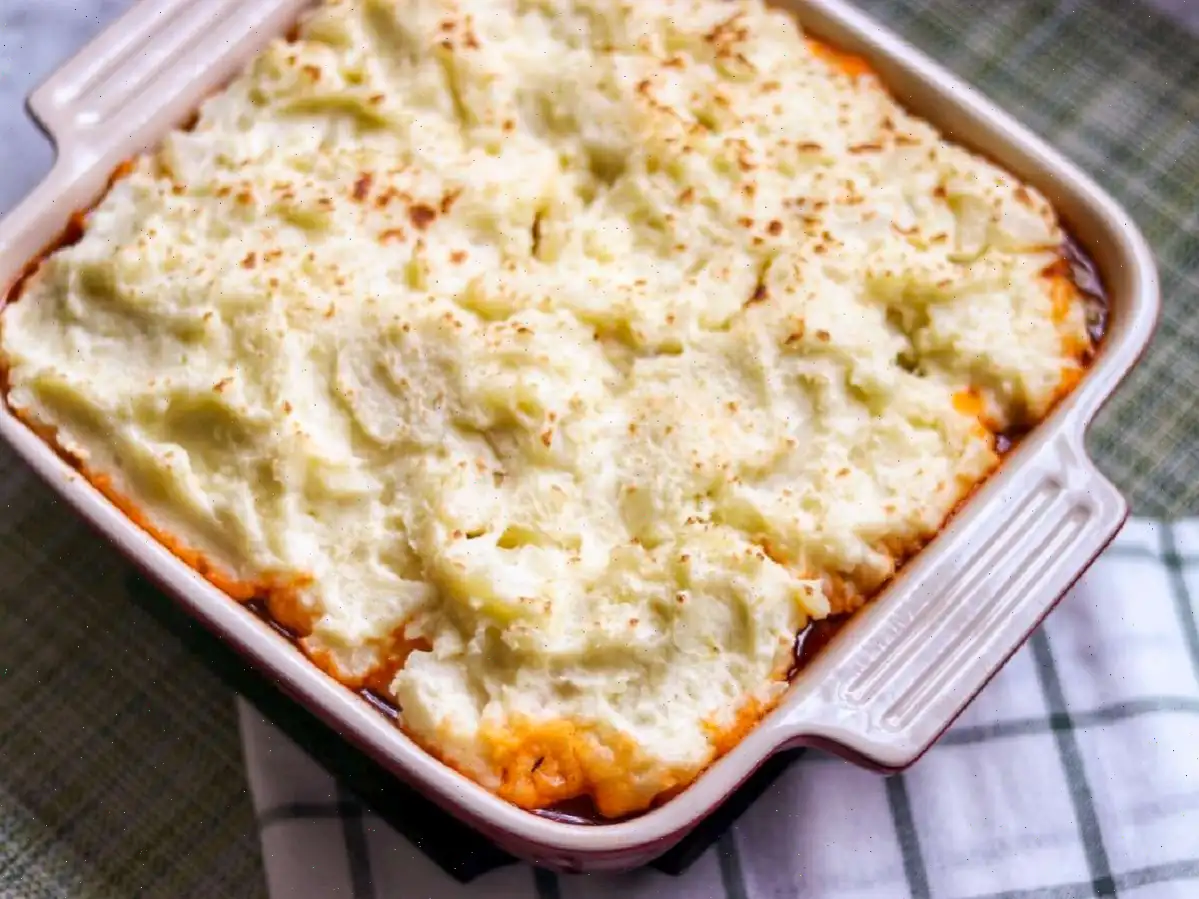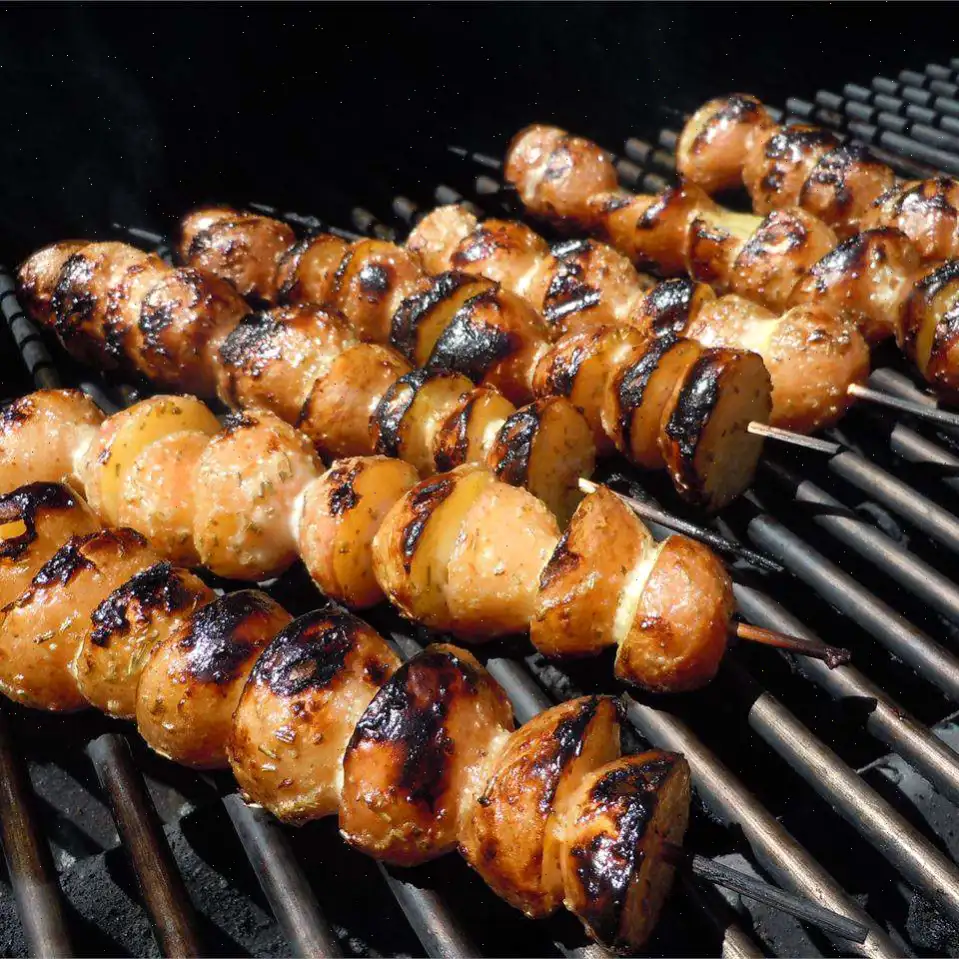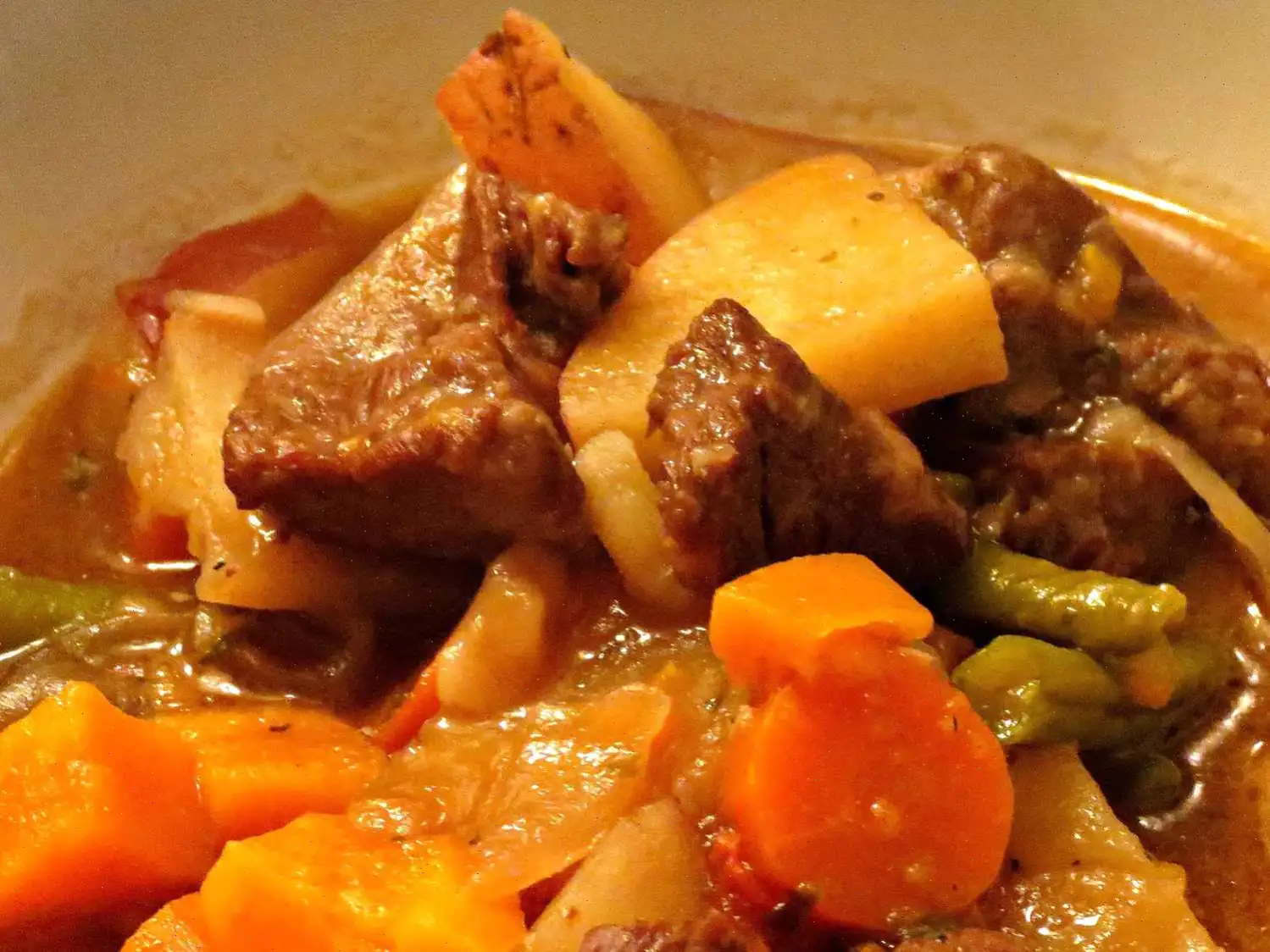
The Best Beef Tri-Tip
This beef tri-tip is tender, juicy, and full of meaty flavor.
What is Tri-Tip?
The tri-tip is a triangular cut of beef from the bottom sirloin subprimal cut (the lower portion of the cows underbelly). Its known for being tender with a rich, beefy flavor.
How to Season Beef Tri-Tip
This boldly flavored beef tri-tip recipe is seasoned with kosher salt, ground black pepper, smoked paprika, garlic powder, cayenne pepper, dried rosemary, and fresh rosemary. The combination of both dried and fresh rosemary takes the flavor up a notch! Of course, you can customize the spice blend to suit your taste.
How to Cook Beef Tri-Tip
Heres a quick overview of what you can expect when you make tri-tip:
- Make the spice rub, then season the tri-tip.
- Bake the meat until its medium-rare (or your desired doneness).
- Cover the pan with foil and let the meat rest for 20 minutes.
- Slice the meat along the grain.
- Mix the broth in with the pan drippings and drizzle over the slices.
Chefs Notes:
Since were cooking at a low temperature, there wont be much carry-over heat. Make sure you reach your target temperature before pulling the tri-tip out. Feel free to substitute chicken broth for beef broth if you prefer.
What to Serve with Beef Tri-Tip
Explore our collection of Best Side Dishes for Steak for delicious serving inspiration. Here are a few top-rated sides to serve with tri-tip:
- Wedge Salad with Elegant Blue Cheese Dressing
- Grilled Sweet Potato Wedges
- Skillet-Braised Brussels Sprouts
Ingredients
- 2 tablespoons kosher salt
- 1 tablespoon freshly ground black pepper
- 1 tablespoon smoked paprika
- 1 teaspoon garlic powder
- teaspoon cayenne pepper
- 1 teaspoon dried rosemary
- 1 tablespoon chopped fresh rosemary leaves
- 1 (2 pound) beef tri-tip roast
- cup beef broth (optional)
Directions
- Gather the ingredients and preheat the oven to 225F (110C).
- In a small bowl, mix the kosher salt, black pepper, smoked paprika, garlic powder, cayenne pepper, dried rosemary, and fresh rosemary together.
- Place the tri-tip in a baking pan and generously season it with the spice rub, covering both sides completely.
- Bake the meat in the preheated oven until an instant-read thermometer inserted into the thickest part of the tri-tip reads 130F (54C) for medium-rare, or until your desired doneness. This should take 1 to 2 hours. Flip the meat halfway through cooking.
- Cover the pan with aluminum foil and let the meat rest for 20 minutes.
- Transfer the tri-tip to a cutting board. Slice the meat into two pieces along the direction where the grain changes. Then, slice across the grain into thin pieces.
- Mix the beef broth with the pan drippings and drizzle the mixture over the slices of meat before serving.
Nutrition Facts (per serving)
| Calories | 12g Fat | 1g Carbs | 38g Protein |
|---|---|---|---|
| 274 | 12g | 1g | 38g |
Daily Values:
- Total Fat: 12g (15% of daily value)
- Saturated Fat: 4g (22% of daily value)
- Cholesterol: 132mg (44% of daily value)
- Sodium: 1540mg (67% of daily value)
- Carbohydrates: 1g (1% of daily value)
- Dietary Fiber: 1g (3% of daily value)
- Protein: 38g (77% of daily value)
- Iron: 4mg (20% of daily value)
- Potassium: 353mg (8% of daily value)

By Chef John
Origin and History
The tri-tip roast has its origins in the United States, specifically in California, where it was popularized in the 1950s. The cut comes from the bottom of the sirloin, shaped like a triangular tip, hence its name. Although it was once considered a lesser-known cut, tri-tip has gained widespread popularity in American barbecue culture, especially in California's Central Coast. This unique cut of beef offers a tender, flavorful meat that has become a favorite for grilling and roasting.
Regional Features
In California, the tri-tip is often associated with Santa Maria-style barbecue, a cooking method that involves seasoning the meat with a simple rub of salt, pepper, and garlic, and cooking it over an open flame. This regional preparation method has made the tri-tip a beloved feature of local cuisine, often served with traditional sides such as pinquito beans, salsa, and garlic bread. The Santa Maria style also emphasizes the use of oak wood for grilling, which imparts a distinct smokiness to the meat.
Differences from Similar Dishes
Tri-tip roast is distinct from other similar beef cuts, such as the flank steak or brisket, in both its texture and flavor. Unlike flank steak, which can be tougher and needs to be marinated before cooking, tri-tip is naturally tender and requires minimal preparation to achieve a juicy, flavorful roast. Compared to brisket, which is typically slow-cooked for several hours, tri-tip cooks much faster, especially when baked low and slow in the oven. It also doesnt require the same level of fat-trimming, as tri-tip has a nice balance of fat that enhances its taste without being overwhelming.
Where Its Usually Served
Tri-tip is most commonly served as a roast in family-style meals, often accompanied by traditional sides like roasted vegetables, mashed potatoes, or rice. Its also a popular choice for barbecues and outdoor gatherings, especially in California. Tri-tip sandwiches, made with slices of the roast piled onto crusty bread, are also a common way to serve this flavorful cut, often accompanied by a tangy sauce or au jus made from the meats drippings. In restaurants and steakhouses, tri-tip is often offered as an alternative to more expensive cuts like prime rib or filet mignon, providing a cost-effective yet flavorful option for beef lovers.
Interesting Facts
- In the 1950s, the tri-tip was often discarded as a less desirable cut of beef before it became popular in California's barbecue scene.
- The term Santa Maria-style barbecue comes from the town of Santa Maria in California, where tri-tip roast is a culinary staple.
- Unlike many beef cuts, tri-tip is usually roasted or grilled whole, then sliced against the grain to maximize tenderness and flavor.
- Tri-tip has a relatively low fat content compared to other cuts like brisket or rib-eye, making it a leaner option without sacrificing flavor.
- Despite its American roots, tri-tip has also gained recognition internationally, with many barbecue enthusiasts around the world adopting their own variations of the recipe.
FAQ about The Best Beef Tri-Tip
Comments
Dorothy Roberts
04/19/2023 02:49:12 PM
This tri tip steak was absolutely fantastic! Following the recipe to a tee, I was blown away by how delicious it turned out. The rub and cooking method were spot on, resulting in a tender and flavorful dish. I served it with brown rice and fresh vegetables, and the combination was simply mouthwatering. I will without a doubt be making this again and again.
Susan Nguyen
07/29/2023 04:02:26 AM
Well Chef, you've really hit the mark with this recipe. I prepared it tonight and it was fantastic. Even though I was missing cayenne pepper, it still came out great. Before applying the dry rub, I coated the tritip with olive oil. I will definitely be making this again. I'm thinking of trying it out in the smoker next time. Thank you, chef!
Donald Wilson
05/30/2025 03:25:27 AM
Absolutely delightful and incredibly simple. I took off the silver skin and excess fat cap. Didn't have fresh rosemary, but it wasn't even necessary. Only used 1 tablespoon of salt. Cooked for 1 hour and 45 minutes. Turned out perfectly. Tender and delicious! 😊
Eric Perez
02/24/2025 08:57:32 AM
This recipe is fantastic! The seasoning rub is very reminiscent of flavors I love. I prefer to use less salt (1 tablespoon) in my version. When it comes to substituting regular salt for Kosher salt, I strongly advise against it. Stick to the recipe and you'll end up with a delicious meal.
Jacob Edwards
03/19/2025 02:26:13 AM
The dish was cooked to perfection and had a delightful taste. Next time, I would opt for just one tablespoon of salt instead of two.
Kathleen King
03/05/2025 01:20:14 PM
As a first-timer cooking a tri-tip roast, I decided to follow this recipe precisely. And let me just say, it was amazing! It turned out to be a close rival to prime rib! I paired it with a creamy blue cheese sauce, which added a nice touch, although the roast was flavorful enough with just the pan drippings. I trusted Chef John's advice to cook it to 130 degrees, then let it rest covered for 20 minutes. The result was a perfectly tender and delicious medium rare roast that my family absolutely loved.
Eric Parker
05/01/2025 12:35:24 PM
I decided to leave out the Rosemary because I'm not a fan of it. Despite its initial appearance when taken out of the oven without much browning due to the low temperature, it turned out to be fantastic. After taking a small bite, any doubts I had vanished - the dish was incredibly moist and tender. I liked it so much that I'm making it again today following the same recipe.
George Baker
11/12/2023 08:12:09 PM
Requires significant improvement. Achieving a 130-degree internal temperature when cooking tri-tip results in a unpleasantly gooey texture. Not recommended.








